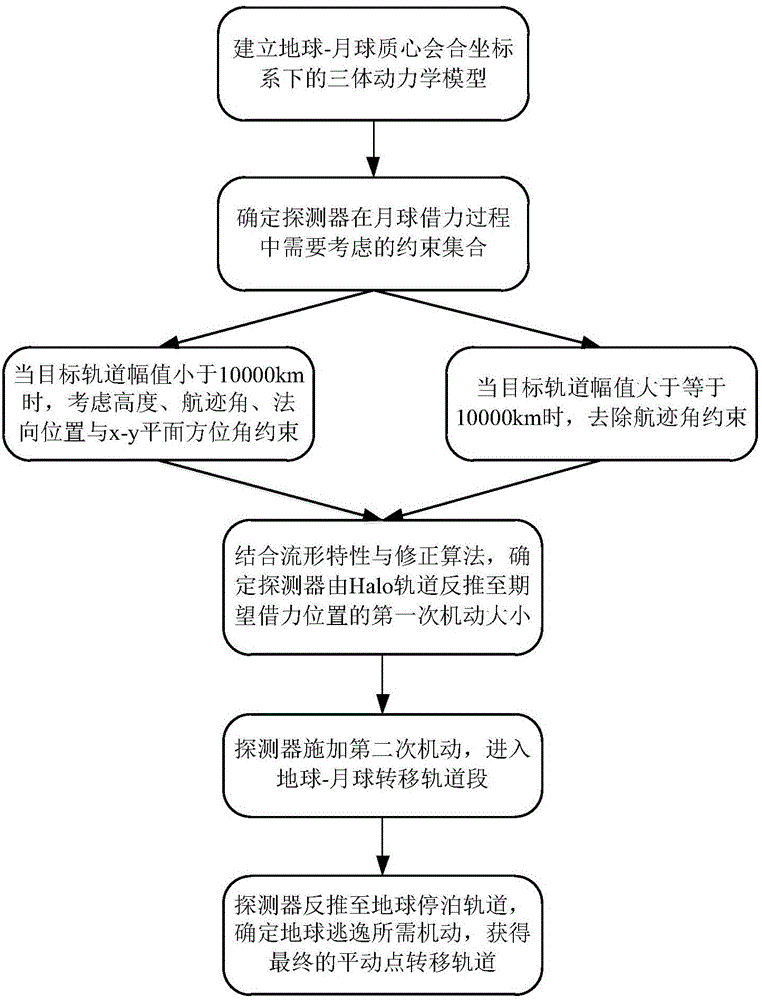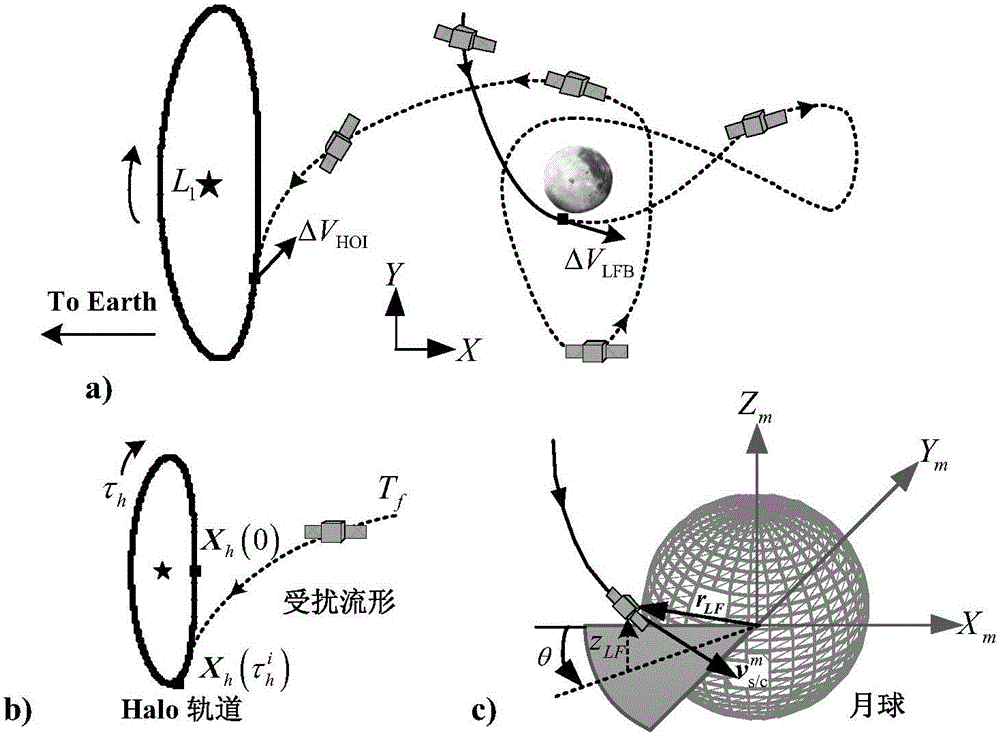Quick design method of earth-moon L1 Lagrange point transfer orbit
A design method and technology for transferring orbits, applied in calculation, special data processing applications, instruments, etc., can solve the problems of long flight period and long calculation time of probes
- Summary
- Abstract
- Description
- Claims
- Application Information
AI Technical Summary
Problems solved by technology
Method used
Image
Examples
Embodiment 1
[0042] Such as figure 1 As shown, the invention discloses a method for quickly designing the transfer orbit of the Earth-Moon L1 Lagrangian point, aiming at the small normal amplitude A z = 5000km target Halo orbit design steps are as follows:
[0043] Step 1. The probe applies the first maneuvering pulse at the ideal orbit point of the target Halo orbit, and recursively from the L1 Lagrangian point Halo orbit to the position of the near-moon point that satisfies the leverage constraint;
[0044] When designing the orbit of the probe, it is necessary to consider the influence of the gravity of the earth and the moon in the coordinate system of the convergent center of mass. The dynamic equation can be expressed as:
[0045] x ·· - 2 y · = ∂ U ∂ x = x - ( 1 - μ ) r E S 3 ( x + μ ) - μ r M S 3 ( x - 1 + μ ) y ·· + 2 x · = ∂ U ∂ y = ...
Embodiment 2
[0066] Such as figure 1 As shown, the invention discloses a method for quickly designing the transfer orbit of the Earth-Moon L1 Lagrangian point, aiming at the large normal amplitude A z = 30000km target Halo orbit design steps are as follows:
[0067] Step 1. The probe applies the first maneuvering pulse at the ideal orbit point of the target Halo orbit, and recursively from the L1 Lagrangian point Halo orbit to the position of the near-moon point that satisfies the leverage constraint;
[0068] When designing the orbit of the probe, it is necessary to consider the influence of the gravity of the earth and the moon in the coordinate system of the convergent center of mass. The dynamic equation can be expressed as:
[0069] x ·· - 2 y · = ∂ U ∂ x = x - ( 1 - μ ) r E S 3 ( x + μ ) - μ r M S 3 ( x - 1 + μ ) y ·· + 2 x · = ∂ U ∂ y = ...
PUM
 Login to View More
Login to View More Abstract
Description
Claims
Application Information
 Login to View More
Login to View More - R&D
- Intellectual Property
- Life Sciences
- Materials
- Tech Scout
- Unparalleled Data Quality
- Higher Quality Content
- 60% Fewer Hallucinations
Browse by: Latest US Patents, China's latest patents, Technical Efficacy Thesaurus, Application Domain, Technology Topic, Popular Technical Reports.
© 2025 PatSnap. All rights reserved.Legal|Privacy policy|Modern Slavery Act Transparency Statement|Sitemap|About US| Contact US: help@patsnap.com



